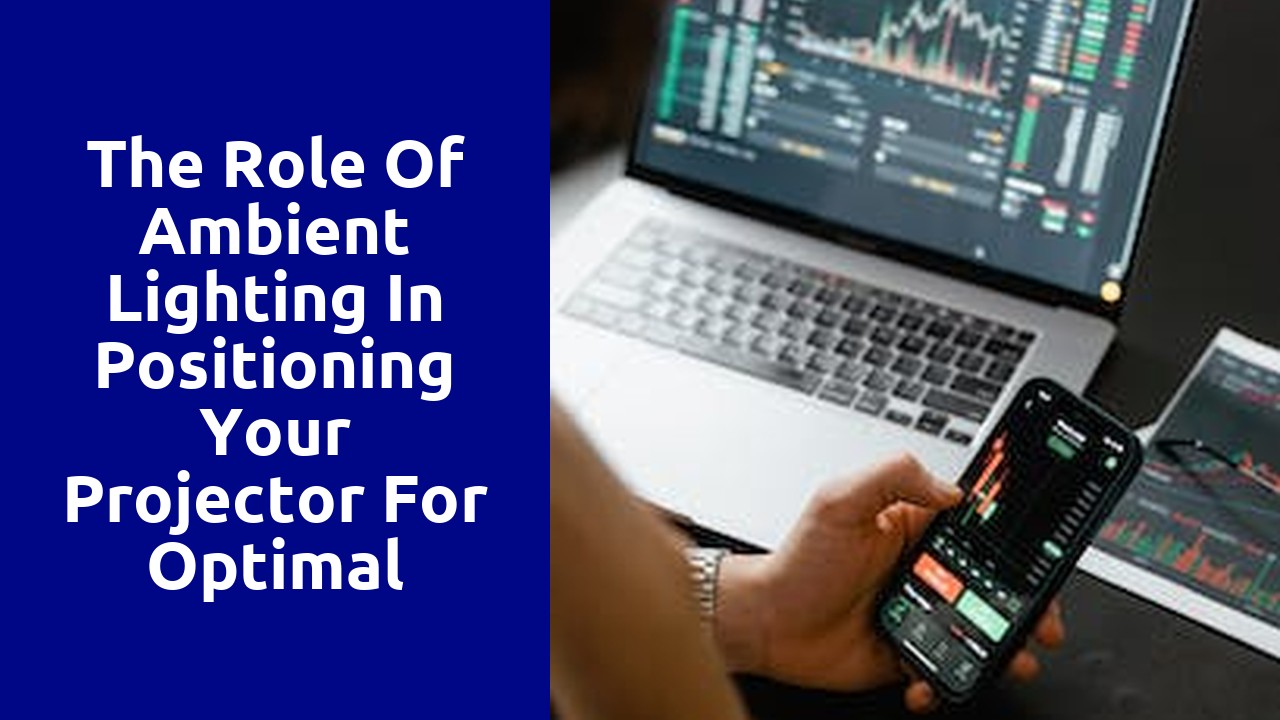

The performance of projectors can be significantly influenced by the ambient lighting in the room. The amount and type of lighting present in the environment can greatly impact the image quality and overall viewing experience.
In darkened rooms with little to no ambient lighting, projectors can deliver sharp, vibrant images with high contrast. This is because the absence of external light allows for better control over the projected light, resulting in a more defined and immersive visual display. However, when the ambient lighting increases, whether from natural sunlight or artificial sources, the projector's performance may be compromised. Excessive ambient light can cause the projected image to appear washed out, reducing its clarity and diminishing the overall sharpness. Additionally, strong ambient lighting can create distracting glare on the screen, making it difficult for viewers to fully engage with the content.
When it comes to positioning your projector for optimal display, there are several factors that should be taken into consideration. Firstly, you need to think about the distance between the projector and the screen or wall. This can significantly impact the image quality and clarity. Generally, the farther the projector is from the screen, the larger the image will be, but it may also result in a loss of brightness. On the other hand, if the projector is too close to the screen, the image may appear distorted or pixelated. Finding the right balance is crucial to ensure a visually pleasing viewing experience.
In addition to the distance, the height at which the projector is placed can also affect the display quality. Ideally, the projector should be mounted or positioned at a height that allows for the image to be projected at the center of the screen. If the projector is placed too high or too low, it may result in an uneven image or unwanted keystoning effect, where the top or bottom of the image appears wider or narrower than the middle. It is recommended to use a projector mount or adjustable stand to achieve the desired height and ensure a straight and properly proportioned display.
When it comes to choosing the right projection screen for different ambient lighting conditions, several factors need to be considered. One of the primary considerations is the level of ambient light in the room where the screen will be installed. Rooms with high levels of ambient light, such as conference rooms with large windows or brightly lit retail spaces, require a projection screen with high gain. High gain screens are designed to reflect more light back to the viewer, resulting in brighter and more vibrant image quality.
On the other hand, rooms with low levels of ambient light, such as home theaters or dimly lit classrooms, require a different type of projection screen. In these cases, a screen with a lower gain is recommended. Lower gain screens are designed to diffuse the light more evenly, reducing hotspots and providing a wider viewing angle. This type of screen is ideal for creating a more immersive and cinematic experience, where the focus is on the details and contrast of the projected images. Considering the ambient lighting conditions of the room is crucial to ensure optimal image quality and a satisfying viewing experience.
Projector setup is a crucial aspect of creating an immersive viewing experience. However, ambient light interference can mar the image quality, diminishing the overall impact. To ensure optimal visual clarity, it is essential to minimize ambient light interference by taking a few simple steps.
Firstly, consider the placement of your projector. Avoid positioning it in areas with excessive natural light, such as near windows or skylights. Additionally, be mindful of artificial light sources, such as lamps or overhead lighting fixtures. Choose a location where the projector can be shielded from these sources to prevent unwanted interference.
Lighting plays a crucial role in enhancing the image quality projected by a projector. Proper lighting techniques can significantly improve the clarity, sharpness, and overall visual experience for the audience. Experimenting with different lighting setups can help to achieve the desired results and create a more immersive viewing experience.
One technique to consider is adjusting the ambient lighting in the room. The amount and quality of ambient light can greatly impact the projected image. Too much ambient light can wash out the colors and make the image appear dull, while too little light can make it difficult to see the details. Finding the right balance is key. Dimming the lights or using blackout curtains can minimize external light sources, allowing for better contrast and vibrant colors on the screen. Alternatively, incorporating indirect lighting or strategic task lighting can create a more comfortable and visually appealing environment.
Effective control of ambient lighting is crucial in creating an ideal viewing environment. It plays a significant role in ensuring the best possible visual experience for viewers. Unwanted sources of light can cause distractions and reduce the overall picture quality, making it difficult to fully immerse oneself in the content being watched. Thus, it is imperative to consider the various factors that contribute to ambient lighting and implement appropriate techniques to manage it effectively.
One key aspect to consider is the placement of windows in the viewing space. Ideally, windows should be covered with curtains or blinds that can be easily adjusted to control the amount of natural light entering the room. Additionally, the use of window films or tinting can be helpful in reducing glare and reflections on the screen. By taking these measures, viewers can enjoy a more comfortable and immersive experience, free from distractions caused by excessive natural light.